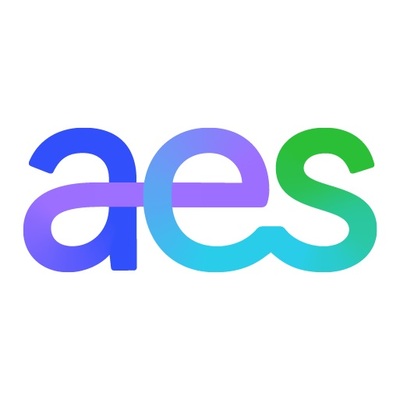AES Launches First AI-Enabled Solar Installation Robot
Rhea-AI Summary
AES has introduced Maximo, an AI-powered robot designed to revolutionize solar panel installation. This groundbreaking technology can install panels in half the time and at half the cost of traditional methods, working alongside human crews to meet the rapidly growing demand for renewable energy. Maximo has already installed nearly 10 MW of solar and is projected to install 100 MW by 2025.
AES plans to utilize Maximo in constructing up to 5 GW of its solar backlog over the next three years, including the 2 GW Bellefield project in California. The robot's AI-powered features include computer vision for precise panel placement, continuous learning for efficiency improvements, and image reconstruction to overcome challenging lighting conditions.
Positive
- Maximo can install solar panels in half the time and at half the cost of traditional methods
- AES expects to use Maximo to build up to 5 GW of its solar backlog and pipeline over the next three years
- Maximo has already installed nearly 10 MW of solar and is projected to install 100 MW by 2025
- The robot will be used in constructing the 2 GW Bellefield project, the largest solar-plus-storage project in the US
Negative
- None.
News Market Reaction 1 Alert
On the day this news was published, AES declined 0.23%, reflecting a mild negative market reaction.
Data tracked by StockTitan Argus on the day of publication.
"Maximo" can install solar panels in half the time and for half the cost
According to the IEA, by 2035, solar annual additions are expected to triple, and the workforce will need to nearly double. Maximo can install solar panels in half the time and half the cost, working together with on-the-ground crews to accelerate renewable energy deployment, reducing time-to-power for customers.
"Maximo is the first proven solar installation robot on the market," said Andrés Gluski, AES President and CEO. "We are facing unprecedented increases in demand, driven in large part by the rise of AI and data centers, and innovations like these will be fundamental for accelerating our ability to bring projects online faster and with greater efficiency."
Maximo enhances the safety and scalability of solar installation by automating the heavy lifting for placing and attaching solar modules. It accelerates project timelines, creates new high-tech jobs and brings opportunities to new segments of the workforce. Maximo expands job opportunities in solar installation, while providing individuals the experience to develop AI skills and learn emerging technologies.
Maximo has already installed nearly 10 MW of solar and is projected to install 100 MW by 2025. AES expects to use Maximo to help build up to 5 GW of its solar backlog and pipeline over the next three years.
AES will utilize Maximo in its construction of the 2 GW Bellefield project in
"As society's energy needs grow, the demand for new solar and wind projects are also increasing, requiring us to innovate so we can scale more quickly," said Chris Walker, Director of AWS Sustainability. "We're excited to collaborate with renewable energy developers like AES that are prioritizing the use of AI technologies that can help us fast-forward to a carbon-free energy future."
Maximo's AI-powered features include:
- AI-Powered Computer Vision: Ensures precise panel placement, enhancing installation accuracy.
- Continuous Learning: Adapting for optimal performance and driving efficiency improvements.
- Image reconstruction: Proprietary generative AI pipeline that reconstructs images obscured by glare or related lighting conditions.
"Today, the US solar industry is setting an impressive pace, installing about 15,000 modules per hour, weighing one million pounds. Looking ahead, this installation rate is projected to reach 50,000 modules per hour by 2035," said Chris Shelton, AES Chief Product Officer. "In response to this exponential growth, we are scaling Maximo, deploying fleets of continually improving robots to empower our teams for faster and more competitive installations."
Maximo can perform in a broad range of climates and lighting conditions and has been validated in the field across a variety of US project sites. It will begin installing at Bellefield in August.
About AES
The AES Corporation (NYSE: AES) is a Fortune 500 global energy company accelerating the future of energy. Together with our many stakeholders, we're improving lives by delivering the greener, smarter energy solutions the world needs. Our diverse workforce is committed to continuous innovation and operational excellence, while partnering with our customers on their strategic energy transitions and continuing to meet their energy needs today. For more information, visit www.aes.com.
Safe Harbor Disclosure
This news release contains forward-looking statements within the meaning of the Securities Act of 1933 and of the Securities Exchange Act of 1934. Such forward-looking statements include, but are not limited to, those related to future earnings, growth and financial and operating performance. Forward-looking statements are not intended to be a guarantee of future results, but instead constitute AES' current expectations based on reasonable assumptions. Forecasted financial information is based on certain material assumptions. These assumptions include, but are not limited to, our expectations regarding accurate projections of future interest rates, commodity price and foreign currency pricing, continued normal levels of operating performance and electricity volume at our distribution companies and operational performance at our generation businesses consistent with historical levels, as well as the execution of PPAs, conversion of our backlog and growth investments at normalized investment levels, and rates of return consistent with prior experience.
Actual results could differ materially from those projected in our forward-looking statements due to risks, uncertainties and other factors. Important factors that could affect actual results are discussed in AES' filings with the Securities and Exchange Commission (the "SEC"), including, but not limited to, the risks discussed under Item 1A: "Risk Factors" and Item 7: "Management's Discussion & Analysis" in AES' 2023 Annual Report on Form 10-K and in subsequent reports filed with the SEC. Readers are encouraged to read AES' filings to learn more about the risk factors associated with AES' business. AES undertakes no obligation to update or revise any forward-looking statements, whether as a result of new information, future events or otherwise, except where required by law.
Any Stockholder who desires a copy of the Company's 2023 Annual Report on Form 10-K filed February 26, 2024 with the SEC may obtain a copy (excluding the exhibits thereto) without charge by addressing a request to the Office of the Corporate Secretary, The AES Corporation, 4300 Wilson Boulevard,
Website Disclosure
AES uses its website, including its quarterly updates, as channels of distribution of Company information. The information AES posts through these channels may be deemed material. Accordingly, investors should monitor our website, in addition to following AES' press releases, quarterly SEC filings and public conference calls and webcasts. In addition, you may automatically receive e-mail alerts and other information about AES when you enroll your e-mail address by visiting the "Subscribe to Alerts" page of AES' Investors website. The contents of AES' website, including its quarterly updates, are not, however, incorporated by reference into this release.
Press Release
Media Contact: Katie Lau, 832-455-1165, katie.lau@aes.com
Investor Contact: Susan Harcourt 703-682-1204, susan.harcourt@aes.com
![]() View original content to download multimedia:https://www.prnewswire.com/news-releases/aes-launches-first-ai-enabled-solar-installation-robot-302209154.html
View original content to download multimedia:https://www.prnewswire.com/news-releases/aes-launches-first-ai-enabled-solar-installation-robot-302209154.html
SOURCE The AES Corporation








